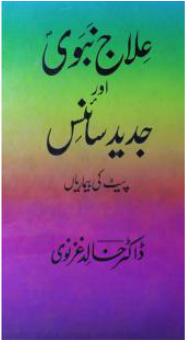Bu Ali Sina Books In Urdu Pdf Download

Free download all volume Urdu translation of famous historical Tib medicine book Al Qanoon written by Shaik Bu Ali Seena. The Al-Qanun Fil Tibb of Medicine is a translation from Arabic into Urdu. The English name of this book Canon of Medicine by Ibn Sina now available in Urdu. Is a reference book of prescription in five books aggregated by Persian thinker Avicenna (Ibn Sina) and finished in 1025. It introduces a diagram of the contemporary restorative information, which had been generally impacted by Galen. The Canon of Medicine remained a restorative specialist for quite a long time.
Bu ali sina books in urdu pdf Bu ali sina books in urdu pdf Bu ali sina books in urdu pdf DOWNLOAD! Bu ali sina books in urdu pdf. Search Results of koka shastra in urdu by koka pandit free download. While still young, he attained such a degree of expertise in medicine that his renown spread far and wide. At the age of 1. 7, he was fortunate.
It set the principles for a solution in Medieval Europe and the Islamic world and was utilized as a standard therapeutic reading material through the eighteenth century in Europe. It is as yet utilized as a part of Yunani drug, a type of conventional medication honed in India. The Al qanoon book of Medicine is divided into five volumes.
You may read by Ibn e Rushd and by Hakeem Syed Muhammad Hasaan.
• • • The Book of Healing (: کتاب الشفاء Kitāb al-Šifāʾ,: Sufficientia) is a and written by (Avicenna) from ancient Persia, near in. Also called The Cure it is intended to 'cure' or 'heal' ignorance of the soul. Despite its title, it is not concerned with medicine; Avicenna's earlier in 5 volumes had been medical. This book is Ibn Sina’s major work on.
He probably began to compose the al-Shifa in 1014, completed it around 1020, and published it in 1027. The book is divided into four parts:,, mathematics (a of,, and ),. It was influenced by ancient, such as, thinkers such as, earlier and and such as (Alkindus), (Alfarabi).
Contents • • • • • • • • • • • • • Sciences [ ] Astronomy [ ] In, the book proposed the theory that is closer to Earth than the Sun. Game ukts bus indonesia for android. Chemistry [ ] Ibn Sina's theory on the formation of combined 's - theory from (although he was a critic of ) with the theories of. He created a synthesis of ideas concerning the nature of the and metallic states. Earth sciences [ ] and (1965), commented on Avicenna's contribution to geology: 'Around A.D.
Fiat ecu scan 3.6 full crack Fiatecuscan 3.6.2 keygen free. Below auto diagnostic obd will sharing Fiat ecu scan 3.6.2 crack fiat ecu scan keygen free download link and Instructions. Download this latest Fiat ECUScan Version from the Official Site Here!
1000, Avicenna was already suggesting a hypothesis about the origin of mountain ranges, which in the Christian world, would still have been considered quite radical eight hundred years later'. Paleontology Ibn Sina also contributed to with his explanation of how the of was caused. Previously explained it in terms of vaporous exhalations, which Ibn Sina modified into the theory of fluids ( succus lapidificatus), which was elaborated on by in the 13th century and accepted in some form by most by the 16th century. Ibn Sina made the following observation on the theories held at the time on fossils and the of plants and animals: 'If what is said concerning the petrifaction of animals and plants is true, the cause of this (phenomenon) is a powerful mineralizing and petrifying virtue which arises in certain stony spots, or emanates suddenly from the earth during earthquake and subsidences, and petrifies whatever comes into contact with it. As a matter of fact, the petrifaction of the bodies of plants and animals is not more extraordinary than the transformation of waters.'
Psychology [ ]. See also: and In The Book of Healing, Avicenna discussed the, its, the mind and body relationship,,, etc. He wrote that at the most common level, the influence of the mind on the body can be seen in voluntary movements, in that the body obeys whenever the mind wishes to move the body. He further writes that the second level of influence of the mind on the body is from and the. As an example, he states that if a plank of wood is placed as a bridge over a, a person could hardly creep over it without falling if that person only pictures himself/herself in a possible fall so vividly that the 'natural power of limbs accord with it.' He also writes that strong negative emotions can have a negative effect on the vegetative functions of an individual and may even lead to death in some cases. He also discusses ( al Wahm al-Amil), stating that one could create conditions in another person so that he/she accepts the reality of hypnosis.
Avicenna was also the first to divide human into the five external (the classical senses of,,, and known since antiquity) and the five internal senses which he discovered himself. The five internal senses he discovered were: the sensus communis (seat of all senses) which integrates sense data into; the imaginative faculty which conserves the perceptual images; the sense of which acts upon these images by combining and separating them, serving as the seat of the practical; Wahm () which perceives qualities (such as good and bad, love and hate, etc.) and forms the basis of a person's character whether or not influenced by; and ( ma'ni) which conserve all these notions in.